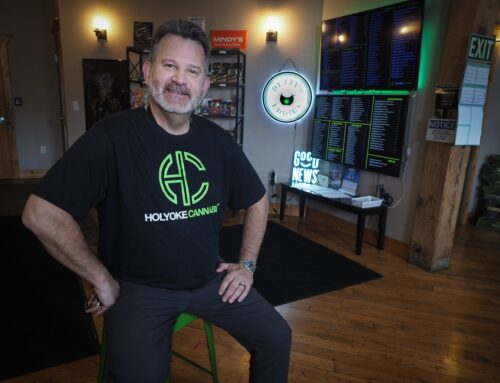These 3 Futuristic Inventions Are Fighting Climate Change—and Making It Look Stunningly Co
April 4, 2025
For more than a century, PopMech’s mission has been to uncover and unpack the game-changing technological breakthroughs that move the world forward. And today, so many of those innovations are laser-focused on the environment: As climate concerns only intensify, there’s more urgency than ever to develop and share cutting-edge solutions to our planet’s most pressing problems.
In that spirit, PopMech was proud to play a small part in the world premiere of The Visioneers With Zay Harding this week. PopMech’s Director of News, Andrew Daniels, moderated a panel with several key players in the eco-adventure series, which debuts Saturday, April 5 on the CBS Television Network (check local listings). The panel included series host and international explorer Zay Harding, as well as Thais Lopez Vogel, David Vogel, and Alejandro Delgado of the partnering VoLo Foundation, a nonprofit that educates the public on taking climate action.
In The Visioneers, Harding travels around the world to meet the scientists and engineers who are tackling today’s biggest climate challenges with ingenious, disruptive—and, it should be said, incredibly cool—solutions that are already making a measurable impact on the planet.
The panelists previewed some of the most transformative technologies you’ll see on the show this season, all of which bring us closer to a cleaner, greener future and embody the kind of creative innovation PopMech has championed for 123 years. Here’s a sneak peek at three especially badass breakthroughs featured on The Visioneers.
Invention #1: The RecycleEYE
Remembering to recycle your bottles, cans, and cartons is step one—making sure they end up in the right bins is a whole different beast. (In the U.S. alone, we generate over 518 million pounds of recyclables that need sorting per year.) That’s where this two-part robotic recycling system comes in.
The first bot sorts trash by blowing air on the recyclable items, pushing them into the right bin. The second bot, meanwhile, acts like a heron scanning for fish in the river and uses its arms to pluck recyclables from a waste-packed conveyor belt. It then identifies and separates them by type—plastic with plastic, glass with glass, and so on. Together, they make up the ultimate trash-busting dream team.
Invention #2: SkyFly’s “The Axe”
In some circles, helicopters have changed the personal air transport game. But they come with a huge environmental cost; just one chopper burns as much fuel in a single hour as 40 cars, and gives off noise pollution that can disrupt communities. SkyFly’s electric vertical takeoff and landing (eVTOL) concept, then—intimidatingly nicknamed “The Axe”—offers the same impressive mobility while prioritizing sustainability.
The Axe is an electric two-seater with fixed wings and angled rotors, giving the vehicle an axe blade-like look. Unlike in rotor-only eVTOLS, the Axe’s fixed wings generate lift and minimize drag, allowing the craft to travel up to 200 miles at speeds of 100 mph. Since it’s powered entirely by lithium batteries, there’s zero fuel burn, and the electric propulsion reduces much of the noise you’d typically hear from choppers during takeoff and flight.
Invention #3: Scripps SOARS
Seventy-one percent of the planet is covered by water, so we’d be wise to worry a bit more about our oceans and their outsized role in our future. Enter The Scripps Ocean-Atmosphere Research Simulator (SOARS), which can recreate all kinds of ocean-atmosphere interactions—wind and wave, aerosol, ecological, and polar and tropical conditions—with unprecedented precision.
At UC San Diego’s Scripps Institute of Oceanography, SOARS can generate winds up to 60 mph, allowing scientists to study how different speeds impact sea-spray aerosol production; test how increasing temperatures impact cloud formation; and see how pollutants affect marine-life ecosystems. In a way, SOARS is like looking into a crystal ball, only it’s supported by hardcore science instead of magic.
Search
RECENT PRESS RELEASES
Related Post











